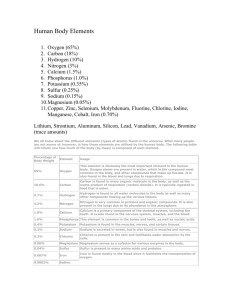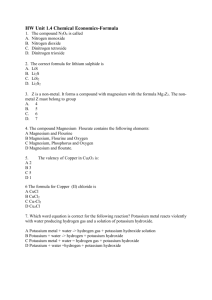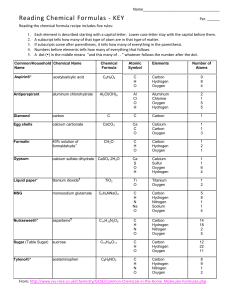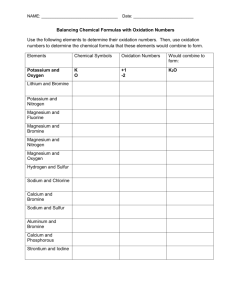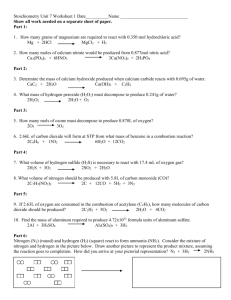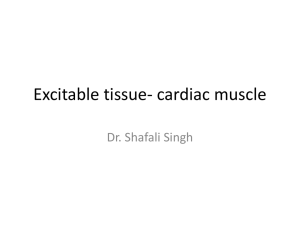Elements in the Human Body
advertisement
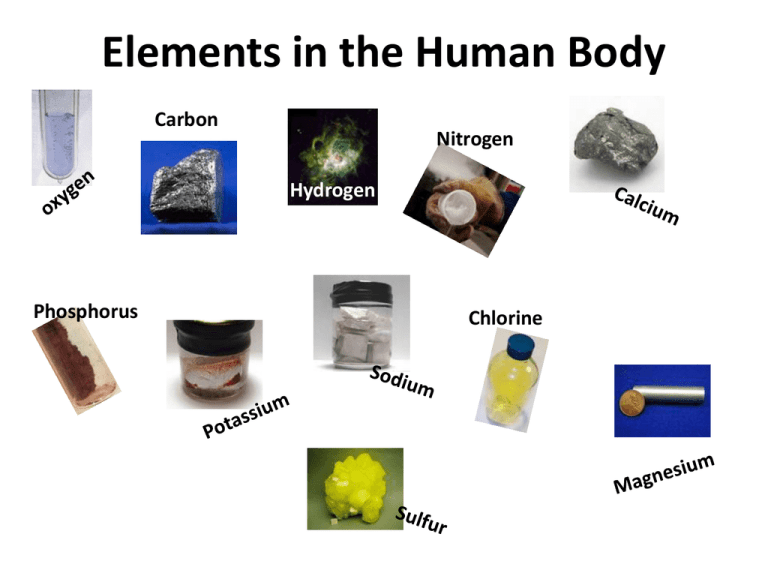
Elements in the Human Body Carbon Nitrogen Hydrogen Phosphorus Chlorine Elements in the Human Body • 99% of the mass of the human body is made up of only six elements: oxygen, carbon, hydrogen, nitrogen, , and . • Every organic molecule contains carbon. Since 65-90% of each body cell consists of water H2O, it isn't surprising that oxygen and hydrogen are major components of the body. Here's is a look at the major elements in the body and what these elements do. Oxygen 65% of Body Weight • Oxygen is present in water and other compounds. Oxygen is necessary for respiration. You will find this element in the lungs, since about 20% of the air you breathe is oxygen. • Oxygen is Non-Metal. 18.6% of Body Weight • Carbon is found in every organic molecule in the body. Carbon is ingested in food that is eaten and breathed in as a component of air. It is found in the lungs as a waste product of respiration, carbon dioxide. • Carbon is a Non-metal. Hydrogen 9.7% of Body Weight •Hydrogen is a component of the water molecules in the body, as well as most other compounds. •Hydrogen is a Non-metal. 3.2% of Body Weight • Nitrogen is a component of proteins, nucleic acids, and other organic compounds. Nitrogen gas is found in the lungs, since most of the air you breathe consists of this element. • Nitrogen is a Non-metal. 1.8% of Body Weight • Calcium is a major component of the skeletal system. It is found in bones and teeth. Calcium is also found in the nervous system, muscles, and blood. It conducts nerve impulses, regulates muscle contractions, and blood clotting. Because it makes up such a large part of the skeleton, about one-third of the mass of human body comes from calcium. • Calcium is in the metal group. 1.0% of Body Weight • Phosphorus is found in the nucleus of every cell. The element is incorporated into the bones, combines with other elements including iron, potassium, sodium, magnesium and calcium. It is necessary for sexual function and reproduction, muscle growth, and to supply nutrients to the nerves. • Phosphorus is in the group non-metal. 0.4% of Body Weight • Potassium primarily is found in the muscles and nerves. Potassium is important for membrane function, nerve impulses, and muscle contractions. Potassium ions are found in cellular cytoplasm. The electrolyte helps to attract oxygen and remove toxins from the tissues. • Potassium is an alkali metals. 0.2% of Body Weight • Sodium is important for proper nerve and muscle function. It is excreted in perspiration. • Sodium is an alkali metal. 0.2% of Body Weight • Chlorine aids in cellular absorption of water. Chlorine is a part of hydrochloric acid, used to digest food. It is involved in proper cell membrane function. • Chlorine is a halogen and is in the Non-Metals 12 Mg 0.06% of Body Weight Magnesium • Magnesium is a cofactor for enzymes in the body. • Magnesium is needed for strong teeth and bones • Magnesium is in the Alkaline Earth group 0.04% of Body Weight • Sulfur is a component of many amino acids and proteins. • Sulfur is in the Non-metals group. Bibliography • http://chemistry.about.com/od/periodictablee lements/ig/Elements-in-the-Human-Body/ • http://www.chemicalelements.com/
